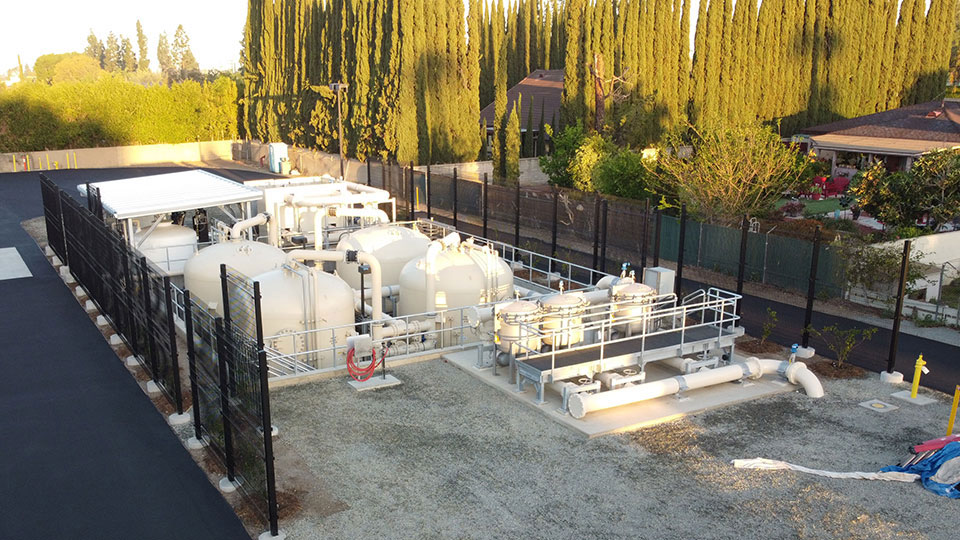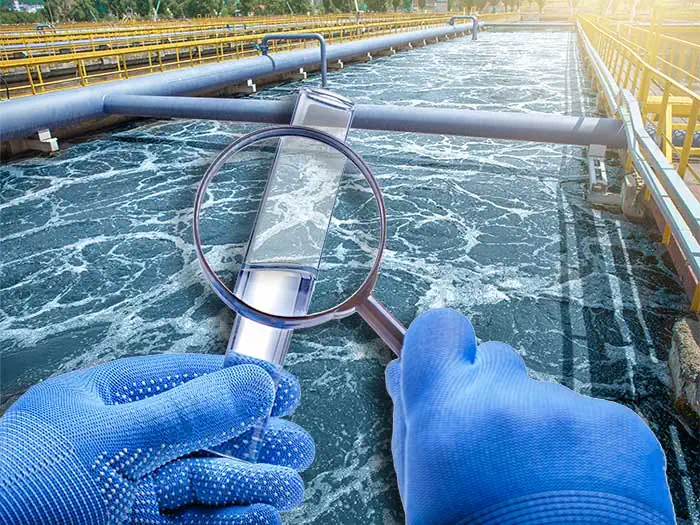Why Advanced PFAS Treatment Is Crucial for Reducing Harmful Chemical Exposure
Why Advanced PFAS Treatment Is Crucial for Reducing Harmful Chemical Exposure
Blog Article
Exactly How PFAS Treatment Ensures Clean and Sustainable Water
The visibility of PFAS, generally referred to as "permanently chemicals," positions significant challenges to water top quality and public health. Advanced therapy technologies, consisting of turned on carbon adsorption and membrane layer purification, have become reliable services to minimize these impurities. By utilizing these methods, communities can not only attain cleaner water yet likewise foster sustainable techniques that protect communities. However, the ramifications of these therapies extend past instant health and wellness advantages; they elevate vital questions about long-lasting water management methods that should be dealt with to ensure a resistant future. What does this mean for our technique to water sustainability?

Recognizing PFAS Contamination
PFAS, or per- and polyfluoroalkyl substances, have become a considerable ecological worry as a result of their extensive occurrence and determination in the setting. These synthetic chemicals have been used in numerous commercial applications and consumer items, consisting of non-stick cookware, water-proof garments, and food packaging, due to their unique homes such as water and grease resistance.
The contamination of soil and water sources by PFAS happens largely with commercial discharges, firefighting foam usage, and leaching from garbage dumps. pfas management. As soon as released, these compounds are resistant to degradation, resulting in their accumulation in the environment. This persistence elevates critical problems, as PFAS can take a trip long ranges with groundwater and surface area water supply, impacting alcohol consumption water products and ecological communities

Wellness Threats of PFAS
The persistence of PFAS in the atmosphere elevates considerable health and wellness concerns for people exposed to these compounds. Research has actually connected PFAS direct exposure to various negative health results, consisting of immune system disorder, liver damage, and enhanced threat of specific cancers.
The universality of PFAS in consumer items, such as non-stick kitchenware, water-repellent fabrics, and food product packaging, further enhances the danger of exposure. Consuming water polluted with PFAS is a significant issue, as these chemicals can leach right into groundwater resources. Susceptible populaces, including children and those living near industrial websites, might face intense risks due to their creating systems and possible for higher exposure levels.
As recognition of these health and wellness risks remains to grow, regulative companies are beginning to develop standards for PFAS levels in drinking water. Public health initiatives are important to minimize direct exposure and shield neighborhoods from the long-term effects of these hazardous substances.

Innovative Treatment Technologies
Exactly how can we effectively tackle the challenges posed by PFAS contamination in water resources? Cutting-edge therapy innovations are emerging as crucial options in the pursuit for clean water. These techniques concentrate on the removal or devastation of per- and polyfluoroalkyl substances (PFAS), which are well-known for their perseverance this website in the setting.
One appealing method is adsorption making use of advanced products, such as activated carbon and ion exchange materials. These products have shown efficacy in catching PFAS particles from water. One more noteworthy modern technology is membrane layer purification, which uses nanofiltration and reverse osmosis to separate contaminants at the molecular degree, thus giving a barrier versus PFAS.
Furthermore, progressed oxidation procedures (AOPs) use solid oxidants to damage down PFAS substances into harmless by-products. This method is particularly effective for dealing with very contaminated water resources. Bioremediation techniques, employing specific bacteria, are likewise being discovered to degrade PFAS.
As study continues, hybrid systems that incorporate numerous modern technologies may use enhanced performance, addressing the complexities of PFAS contamination. The growth and implementation of these innovative treatment innovations are necessary actions towards making certain the security and sustainability news of our water sources.
Advantages of Reliable PFAS Therapy
Efficiently treating PFAS contamination in water resources substantially improves public health and environmental safety. PFAS, frequently referred to as "permanently chemicals," are immune to destruction and can collect in the human body, leading to major health dangers such as cancer, liver damage, and body immune system dysfunction. By implementing efficient treatment methods, neighborhoods can reduce direct exposure to these hazardous materials, inevitably improving the wellness end results of their populations.
Furthermore, successful PFAS treatment contributes to the conservation of regional environments. Polluted water can adversely influence water life and interrupt the fragile balance of regional environments. By guaranteeing tidy water, therapy processes secure biodiversity and keep eco-friendly stability.
Additionally, efficient PFAS remediation can promote public confidence in water quality. When neighborhoods are guaranteed that their drinking water is devoid of unsafe impurities, it advertises a sense of safety and health. This trust fund is crucial for area interaction and support for ongoing water administration campaigns.
Future of Water Sustainability
Amidst expanding concerns regarding water quality and scarcity, the future of water sustainability rests on innovative methods and collaborative efforts. As communities face the looming dangers of contaminants like PFAS, the advancement of advanced treatment modern technologies is necessary. These modern technologies not only focus on the removal of unsafe compounds yet likewise promote the reuse and recycling of water, therefore lowering total demand.
Furthermore, reliable water administration plays a critical function in making certain lasting practices. Policymakers need to integrate scientific research with regulative structures to develop clear standards for water use and treatment. Stakeholder engagement, including regional areas and sectors, cultivates a sense of shared obligation and urges lasting practices across numerous industries.
Financial investment in infrastructure is additionally important; updating aging systems to incorporate modern filtering and filtration approaches can considerably boost water high quality. Furthermore, accepting environment-friendly technologies, such as all-natural filtering systems, can supply green solutions.
Ultimately, the future of water sustainability depends on an all natural approach that combines innovation, plan, and area participation. continue reading this By prioritizing these aspects, we can secure our water sources for generations to find, guaranteeing clean and sustainable water for all.
Verdict
In verdict, the efficient treatment of PFAS is essential for ensuring tidy and lasting water. Ultimately, durable PFAS therapy methods add to long-term strength in water management, promoting public depend on in water high quality and promoting lasting techniques.
Report this page